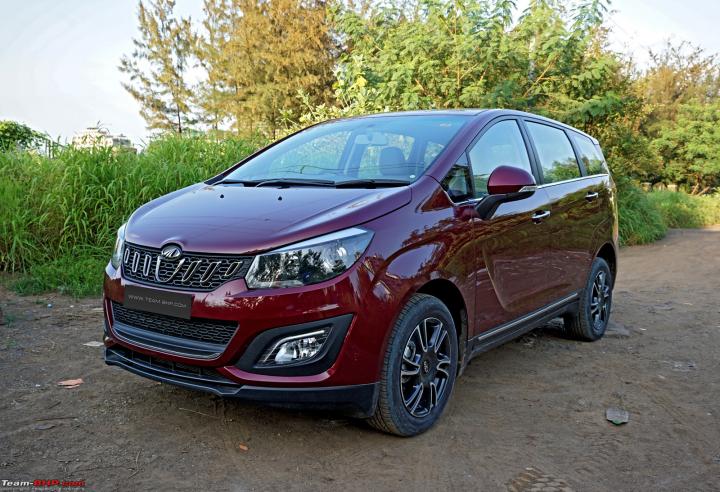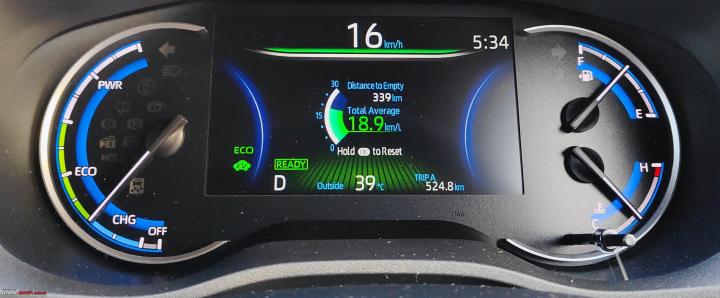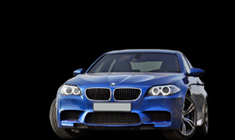News
Managed the best fuel efficiency figures of my Harrier #Jet edition
A Tata without niggles is like masala dosa without the masala.
BHPian ike recently shared this with other enthusiasts.
Another month and another couple of thousand KMS. The car is performing OK and is at 12,600 km in about six months. Yet another roundtrip to Chennai from Thrissur in Nov. I enjoy driving the car, and the convenience of an automatic is just awesome, especially in the city.
Onwards stats. I travelled on Sunday, the 19th of Nov. I patted myself on the back while starting early in the morning from home to reach Chennai in time to watch the World Cup finals. A lot of other people too had the same plans and I encountered significant traffic till Salem. Turns out everyone's too clever by half these days.

A Tata without niggles is like masala dosa without the masala. I observed that sometimes one of the headlamps was turning off when in auto mode, mostly the one on the left. First time I encountered it I switched the headlights off and then back to auto again and the issue cleared. This time that didn't work. I also tried switching the headlights to "ON" from "AUTO" and still only one headlamp was working. Restarting the car(switching the engine off and then back on) fixed it. I took pictures of it, hopefully this can be addressed during the first service that will be due soon. The other interesting aspect is that both instances of the left headlamp turning on happened in similar conditions, once at dawn and then at dusk.


The return stats. Drove out of Chennai as there were heavy rains predicted for the first week of Dec. Was bogged down by heavy rain for the first hundred KMS and took it real easy after capping my speed at 90KMPH. The result was my best-ever FE so far. The other noticeable thing is that the MID seems to have learned how to do its job and the indicated FE is not that far off from the actual tankful-to-tankful method these days.

Check out BHPian comments for more insights and information.
News
Fuel efficiency of my Marazzo varies according to changing temperature
I get a higher FE during the morning and a lower FE during noon.
BHPian Bonemechanic recently shared this with other enthusiasts.
I drive a Marazzo M8 diesel. In Kerala, the temperature soars to 40 °C during noon. I noticed a change in the FE numbers of my car during the morning and noon hours.
Traffic is higher during the morning drive, but the outside temperature is around 26 °C. Non-time traffic is less compared to morning time, but the temperature is high around 38 °C.
I drive alone with the ACC set to 24℃ and 100% time. The driving pattern is also almost the same for to-and-fro driving.
But I get a higher FE during the morning and a lower FE during noon. I assume the FE drop is because ACC works more.
Attaching MID pictures for the last 3 days.
February 7:

February 8:

February 9:
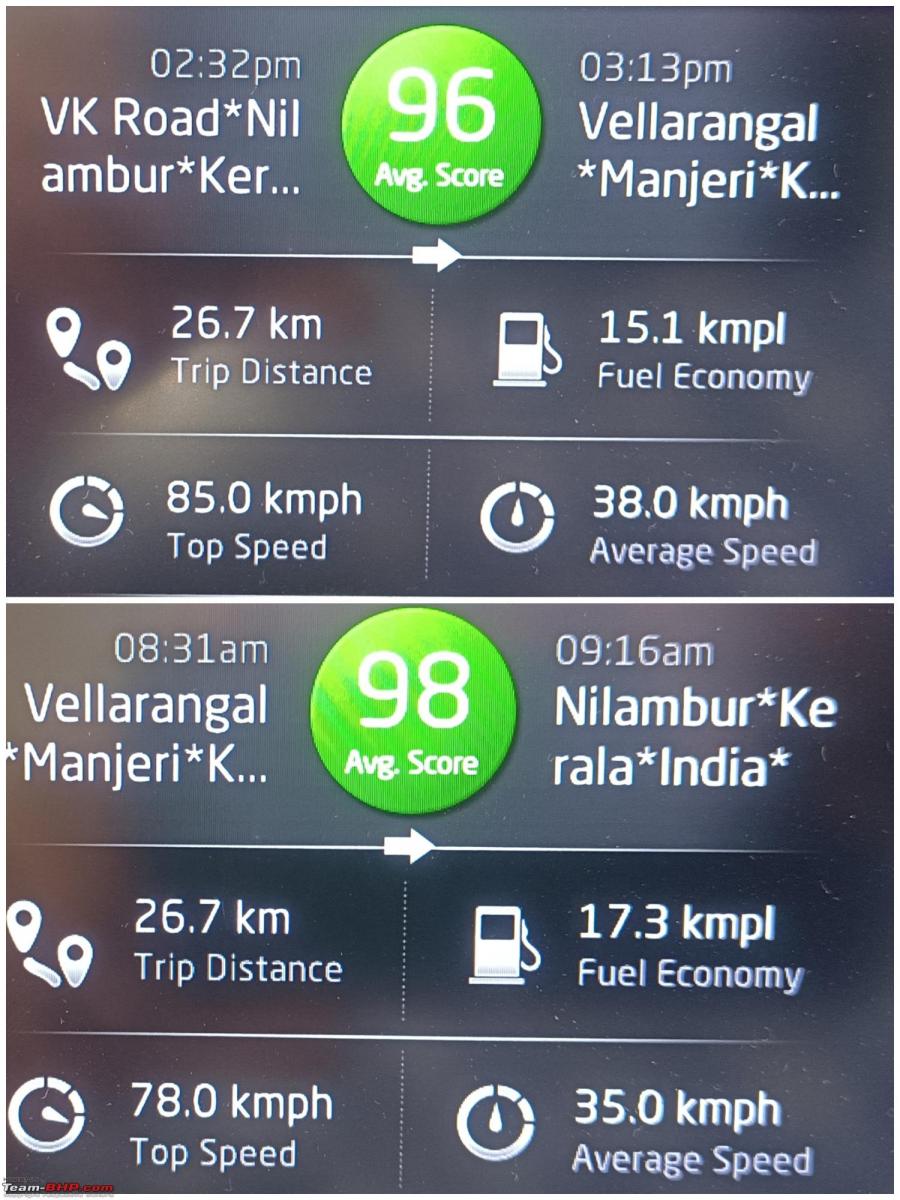
Upper photo is noon drive and lower photo is morning drive.
Just like an EV, consumes more power during the winter to heat, while an ICE uses more fuel to cool during the summer.
Here's what BHPian Shreyans_Jain had to say on the matter:
The extra electrical load due to the radiator fans running full time has minuscule effect on fuel consumption. Two other factors have a greater role.
- The AC system. High ambient temperatures reduce the temperature difference against peak compressed gas temp. This reduced delta T lessens the efficiency of the AC and makes it work harder, which is extra load on the engine. Effect increases progressively with temperature.
- The hot ambient air going into the engine is less dense, which makes for lower availability of oxygen which means lower output. Ergo, engine has to work harder to ferry the same load. Effect increases progressively with temperature, and also creates a positive feedback loop with point 1.
Overall, performance and fuel efficiency both get adversely affected with high ambient temperatures.
Here's what BHPian Jeroen had to say on the matter:
I think the difference if FE can not be explained by ambient temperature alone. Check a map and see what the vertical distance between your departure and arrival point is.
You will find you are probably driving a bit uphill one way and down hill the other way. Not enough to notice when your driving. But even a small gradients has a big impact on fuel efficiency.
Jeroen
Here's what BHPian antz.bin had to say on the matter:
Winter mornings have better efficiency on ICE cars than summer afternoons.
Colder air is denser and when the engine breathes that air, the combustion is better generating more torque for every combustion stroke.
This has been experienced since ages. It has nothing to do with engine being warmed up.
The other loss at a hotter time of day the one to cool the cabin. Air conditioner actually uses a lot more Diesel than us Diesel heads realise. As per my calculations, it uses 250-300ml per hour of running for my sub-4 m car on automatic mode even on a cold December night. Daytime usage at 40°C ambient temperature in a substantially larger car will be even higher per hour.
Both these factors should explain the lower efficiency in the afternoon time compared to the morning which is presumably substantially colder these days.
Here's what BHPian Darthveda had to say on the matter:
Driving an EV for past few years has taught me the range is influenced by the environmental changes too, first time I noticed how much the wh/km increased when the road was wet, the same I noticed during cold temperatures too, when i say cold i mean around 12C. Even though I did not use AC, the wh/km was higher than before.
All these very evident in EV vehicle as we get measurable changes in wh/km, since liquid fuel have a very high density, it doesn't catch our attention in ICE.
Check out BHPian comments for more insights and information.
News
Real-world fuel efficiency of my Jimny after a 800 km road trip
A big plus point of Jimny is the narrow width and compact size.
BHPian RijuC recently shared this with other enthusiasts.
FE figures and long drive (800 km+) experience report:
Yesterday I drove my Jimny from Pahalgam to Gurgaon. Started at 05:15 hrs from JKTDC Hutment area. The first stop was where Pahalgam Road meets NH44. The trip mileage on ICE was 17.3 km/l. This was with both front and rear defogger on.
The next stop was at the entry point of Chenani Nashri Tunnel from the North side for a loo break. It was downhill and FE was 22.6 km/l, with almost 50% time front defogger on. No AC.
The next stop was at Haveli, Katra road entry point in Jammu for breakfast. FE was 18.9 km/l. This section was with AC set between 24-25 deg C.
For the rest of the route, AC was set between 24-25 degrees C. All trip FE can be seen in the attached ICE screenshot.
Reached Gurgaon home at 00:45 hrs. Total drive time was approx. 16.5 hours. Total travel time was 19.5 hours including breakfast, snacks, tea and loo breaks. The total travel distance was 884 km (via the Jammu route). Air pressure was set at 26 psi for cold tyres (top-up was done by myself with a portable MGA tyre inflator at Srinagar before visiting Pahalgam). MY Jimny is of stock spec. with stock tyres (no external fitment which can interfere with CD).
I got a little exhausted mostly because of n-no. of diversions between Jammu and Samba.
A big plus point of Jimny is the narrow width and compact size. The compactness of Jimny saved me from waiting behind traffic jams at a few places.
I am attaching a few photographs of our Jimny and the bright hue of fall colours in Srinagar.


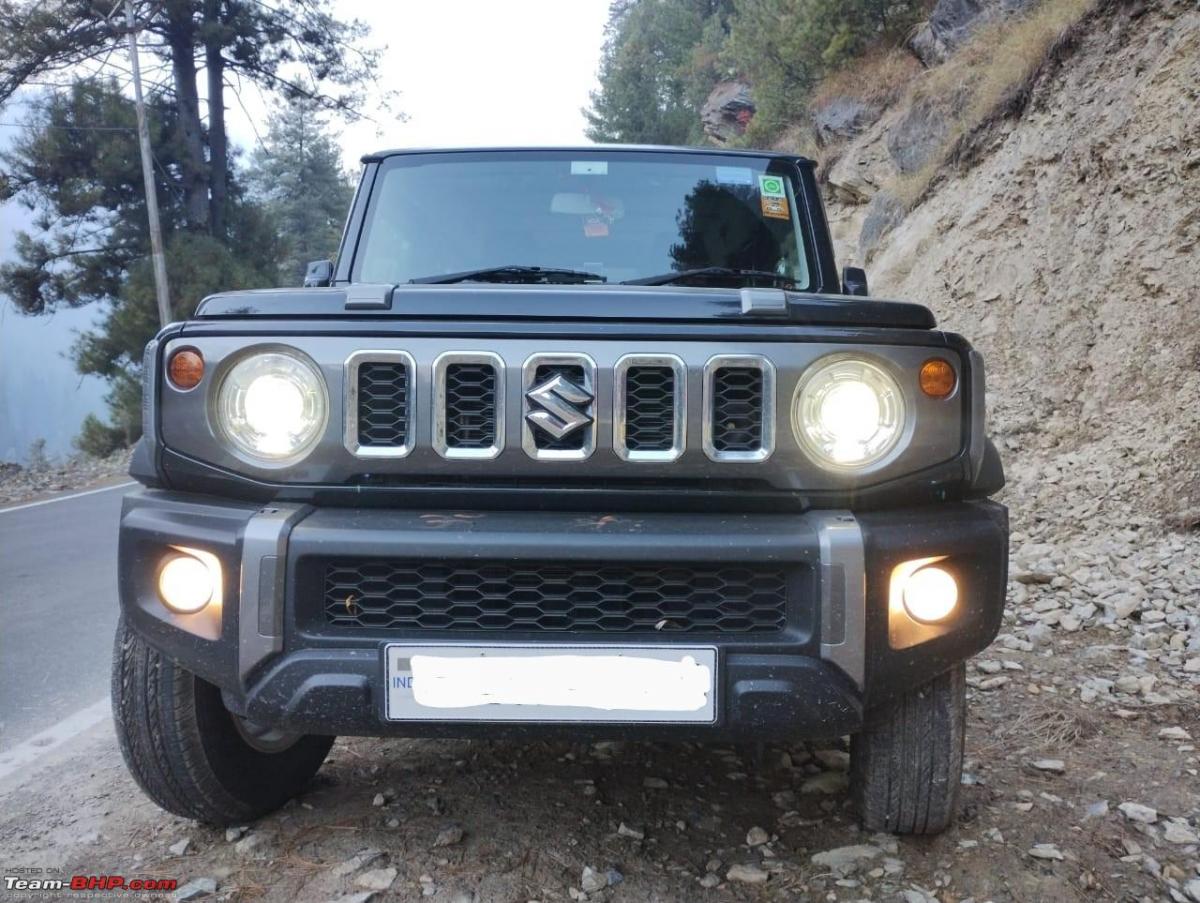




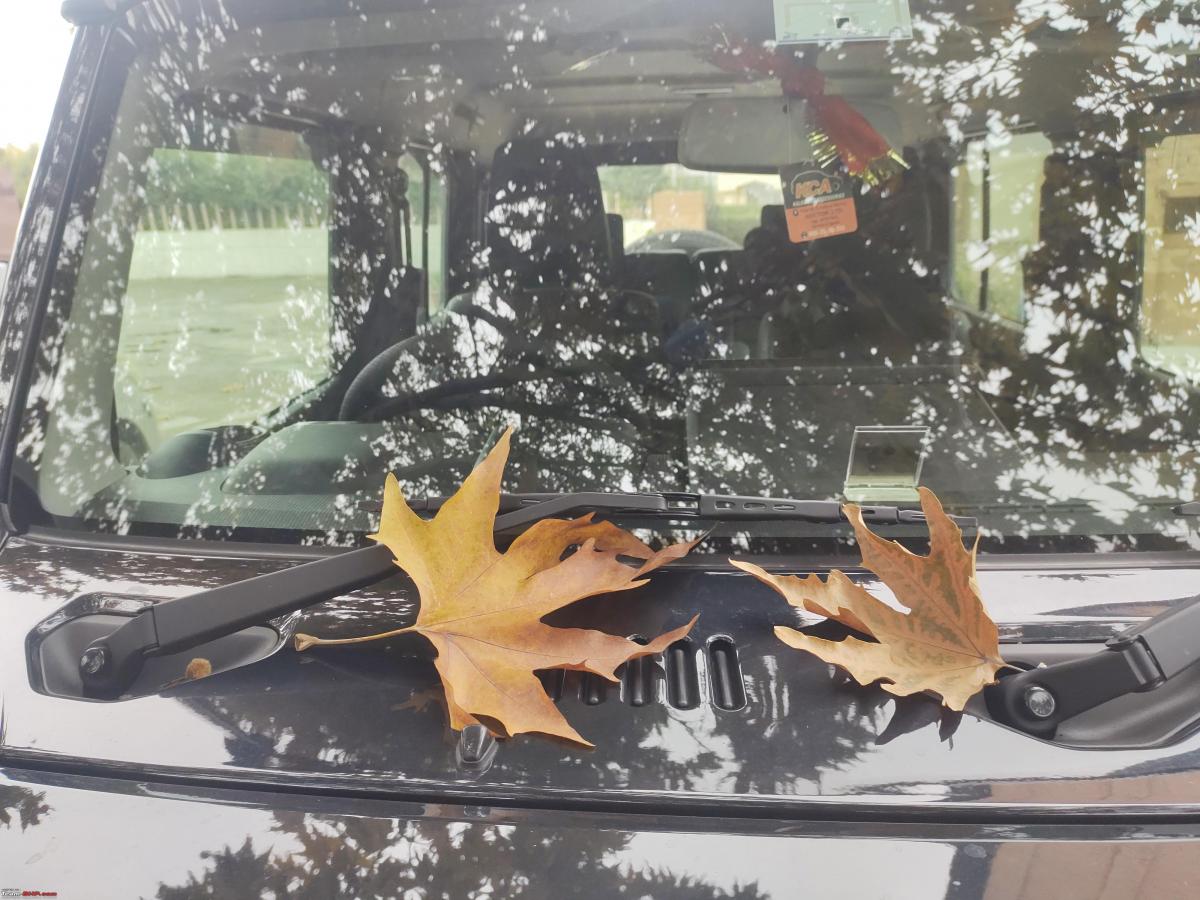
Check out BHPian comments for more insights and information.
News
Tata Harrier & Safari facelift fuel efficiency figures revealed
The updated Harrier and Safari facelifts are slightly more frugal despite using the same engine and transmission combination.
Last week, Tata Motors took the wraps off the updated Harrier and Safari. Both SUVs get several changes on the outside as well as on the interior. While they are mechanically identical to their predecessors, there has been a slight improvement in claimed fuel efficiency.
Under the bonnet, the Harrier and Safari facelift continue to use the same 2.0-litre 4-cylinder diesel engine that makes 168 BHP and 350 Nm. The engine is paired with either a 6-speed manual or a 6-speed automatic transmission.
The Harrier facelift has a claimed fuel efficiency of 16.80 km/l for the manual and 14.60 km/l for the automatic version. On the other hand, the new Safari returns 16.30 km/l and 14.50 km/l for the manual and automatic versions, respectively.
Tata Motors is offering the Harrier and Safari facelifts in four trims. The SUVs now come equipped with several new features, including ADAS, with Adaptive Cruise Control, 7 airbags, a new gear knob dubbed ‘Smart E-Shifter’, paddle shifters and dual-zone automatic climate control with a touch-based control panel. There’s also a new steering wheel with an illuminated logo, a 12.3-inch touchscreen infotainment system, a 10.25-inch digital instrument cluster with Navigational Display, and a 10-speaker JBL audio system.
News
How my Jimny managed an impressive mileage of 17 km/l on a recent trip
18.4 km/l was the best fuel efficiency figure I could extract from the SUV, during a 42 km stretch.
BHPian RijuC recently shared this with other enthusiasts.
Thanks to the G20 summit, we NCRites got to Work from Home for 2 days - 7th and 8th September. And that gave us a good window to revive that Work from Mountains again. Two weeks ago, we had a weekend trip and then the first service was completed after 1000 km running, exactly on day 31 from purchase. This time, it was Dalhousie+Khajjiar in Himachal Pradesh. This region was a little less affected by recent cloudbursts and landslides.
We started from Gurgaon home exactly at 02:30 AM on 7th September and in no time touched NH44, thanks to tight security and traffic restrictions in Delhi. Stayed in HPTDC Dalhousie (not recommended for stay). The first tankful was at Panipat. Before climbing the hills, did a tankful once again at Pathankot. FE was 407 km/ 24.57 litre= 16.56 km/l (with AC).
The next 2 nights were spent at HPTDC, Khajjiar. The view of Khajjiar meadow from the room was heavenly. We roamed around Khajjiar and went to Kalatop (3 km Kuchha road after the Khajjiar forest entry point).
However, Jimny returned dismal FE for these local trips - between 6 and 8 km/l. I am adjusting my driving style and learning how to drive Jimny in the most efficient way.
In the return leg, we stopped at Beeji's Park for a photo session with the T-55 tank, the fighter jet and missiles, and a couple of combat spec Gypsies. Got the best fuel efficiency for the stretch from Beeji's park to Dunera (for lunch break); 42 km, 18.4 kmpl; with AC off for 50% of this distance.
The next stop was at Haveli, Jalandhar; the distance covered 160 km, FE shown was 15.8 km/l.
Then I had to refuel at Indo Canadian bus service, Focal Point, Ludhiana. Distance covered from Haveli was 55 km, and FE was 15.9 km/l. The total tank-to-tank distance was 408 km @33.54 litre, tank-to-tank calculated FE was 12.16 km/l. Almost 50% of this distance was in hills (with AC for 60% of the distance in hills).
Next stop was at Haveli, Ambala. Distance covered = 110 km, FE shown was 15.9 km/l.
I had to take a bio-break at Bhagan toll plaza. Distance covered=138 km, FE shown=17.1 km/l.
At last, we reached home at 02:30 AM, distance covered= 90 km, FE on ICE= 16.9 km/l.
The total distance covered from the last refuelling point is approximately 340 km, and the remaining tank range is 230 km. Let's see how it runs within the city.
I am attaching the ICE display photographs and Jimny in Hills.

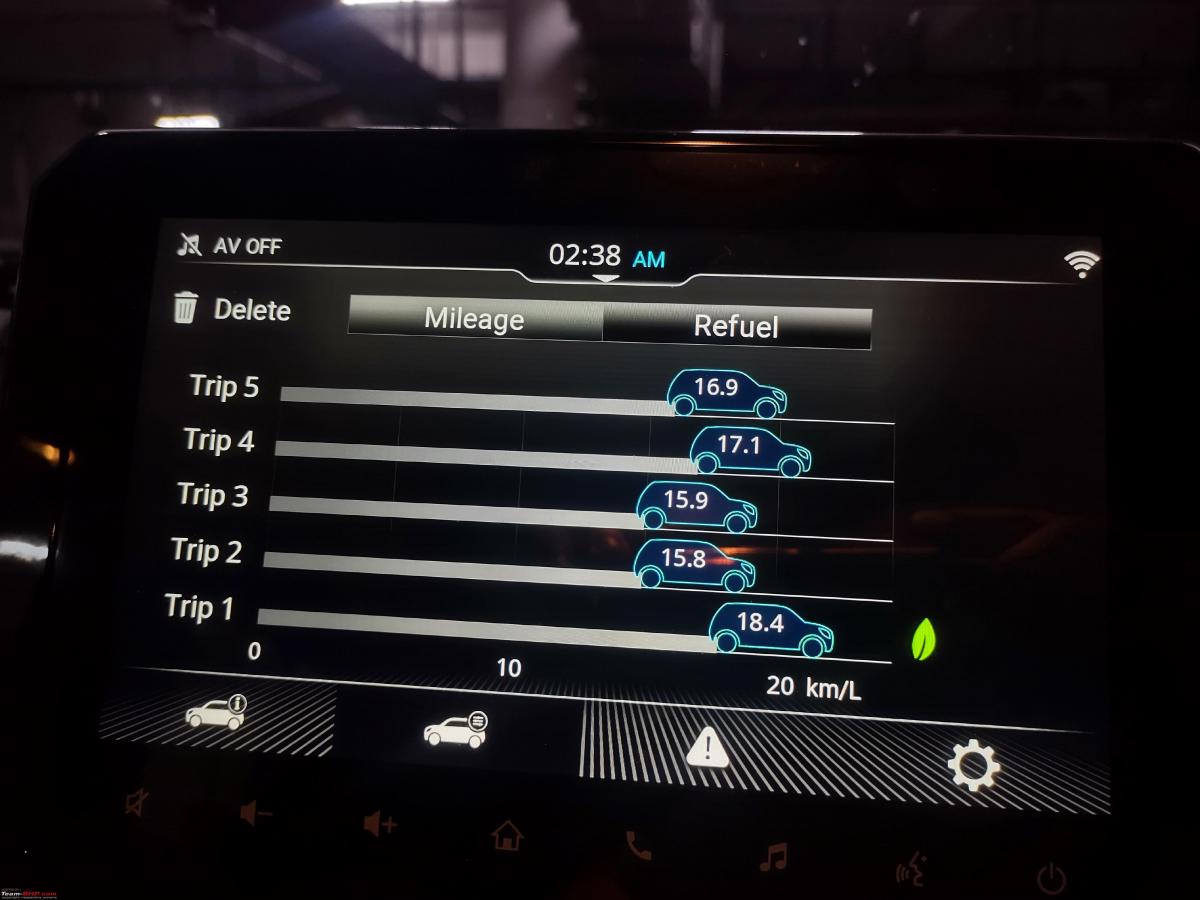







Check out BHPian comments for more insights and information.
News
How I managed to get 22.5 km/L mileage on my XUV 700 D AT AWD
The overall fuel economy of the whole trip showed a good 18.5 kmpl.
BHPian techdarshan recently shared this with other enthusiasts.
Managed to achieve 22+ kmpl on my XUV700 AX7 L AWD after 2nd service during a road trip from Pune to Surat and Statue of Unity.
This was achieved between Pune to Navi Mumbai section. Important to mention that I filled up Shell Diesel. As you would notice, the range indicator seems to be restricted at the largest 3 digit number: 999!
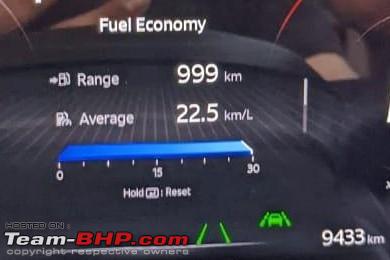
The overall fuel economy of the whole trip showed a good 18.5 kmpl.
With the regular HPCL diesel during the recent drive from Pune-Valsad-Pune (after 3rd service) - managed to get 19+ kmpl during the same stretch (Pune to Navi Mumbai).
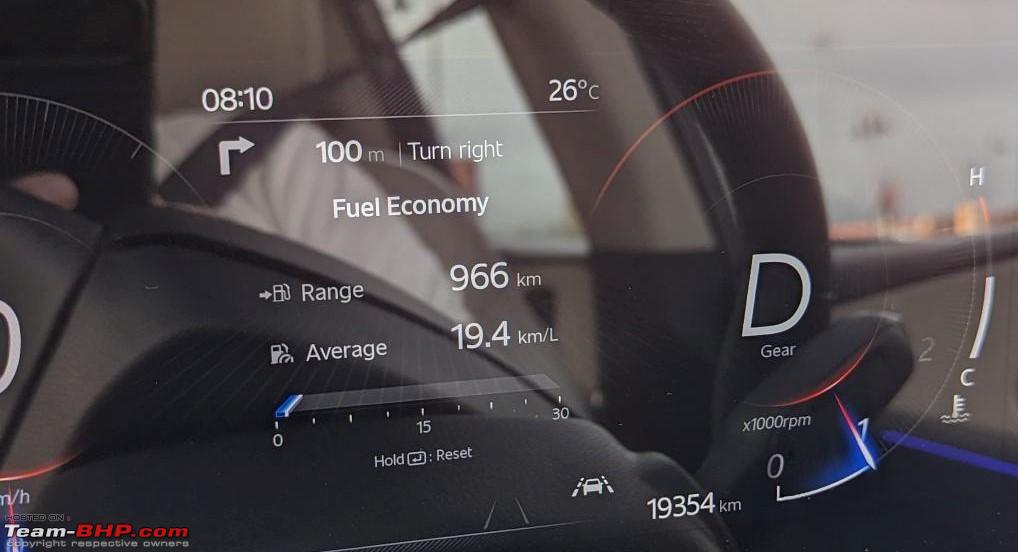
The overall fuel economy of return trip showed 16.5 kmpl.
Read BHPian comments for more insights and information.
News
Real world fuel efficiency of the Skoda Kushaq 1.0L TSI AT
The fuel I use is HP's Power 95 octane. I started using it, solely because it makes the engine run the smoothest.
BHPian ashutoshb recently shared this with other enthusiasts.
Barely missed the 1100 km mark this time.
Had I driven a little less enthusiastically at times, I would have managed it easily
Got 20.7 kpl (1076 km / 51.96 litres) in a full tank of petrol.
For those who don't know, I have a Kushaq 1.0 AT (Torque Converter).
My daily commute is b/w Greater Noida and Noida. A day's trip is around 70 kms, which is 60% expressway and 40% city.
I drive at a speed when the engine feels the smoothest, that is, 80 kph, 1400-1500 rpm at 6th gear. Though, during the course of 1000 kms, the speedo does cross north of 100 kph multiple times.
Also, I don't use the AC much because I smoke in the car. Roughly 40% of the 1076 km would have been with the AC on.
The fuel I use is HP's Power 95 octane. I started using it, solely because it makes the engine run the smoothest. The added performance is only a bonus.
Normal petrol, I feel, it gets a little coarse. However, fuel efficiency remains the same. I have done multiple 1000 km tank full runs on normal petrol as well.
The last image is the range it shows, after the tank full.
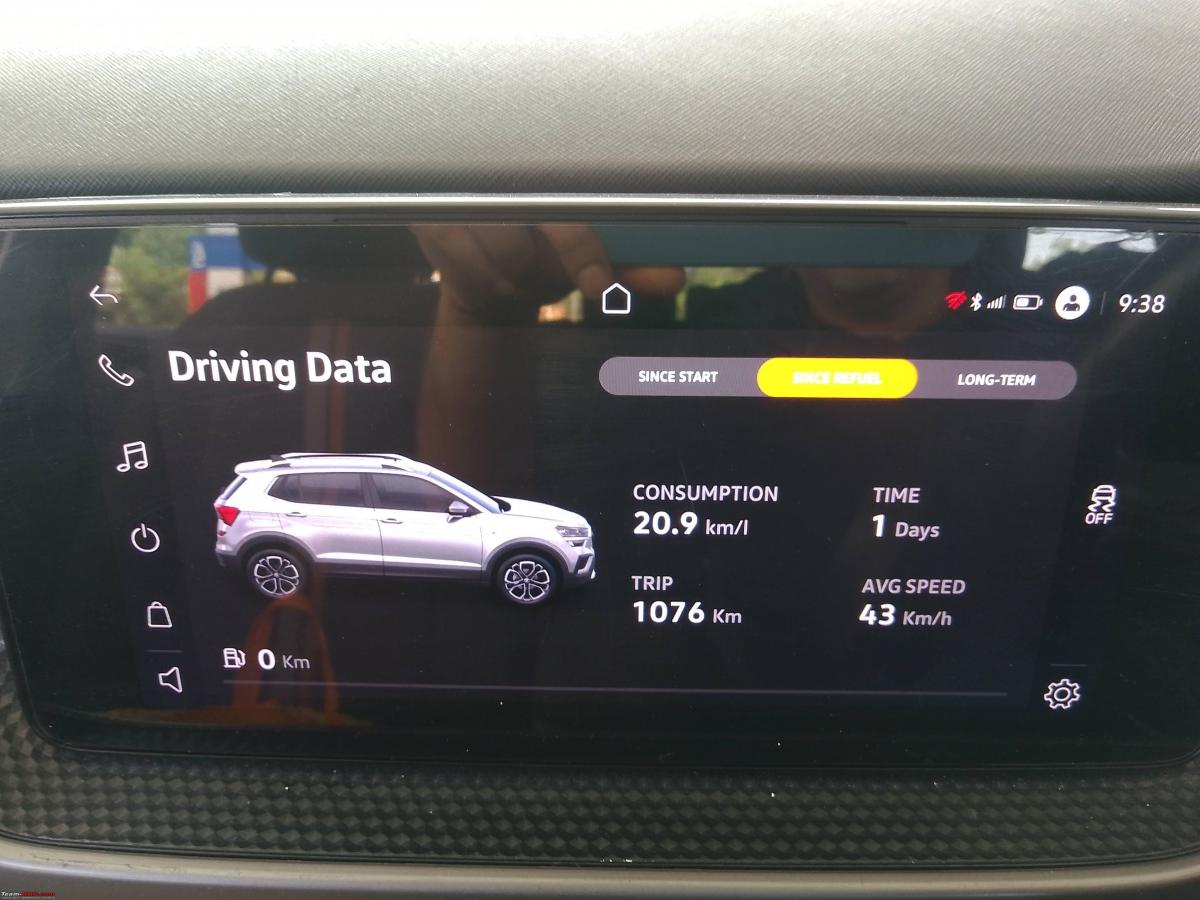


Read BHPian comments for more insights and information.
News
Real world fuel efficiency of the Toyota Innova Hycross Hybrid
Acceleration and handling remain impressive, making both city driving and highway cruising a comfortable experience.
BHPian woodstock3001 recently shared this with other enthusiasts.
Current ODO: 4475.
Pleased to report car has been performing admirably. The engine is running smoothly, and I haven't noticed any unusual noises, or rattles or vibrations.
Acceleration and handling remain impressive, making both city driving and highway cruising a comfortable experience.
As per tank full to tank full method, fuel efficiency I got is 15.76 KMPL, which involves 100% AC ON, Delhi to Gurgaon office commute during peak office hours (incl. Punjabi Bagh traffic jam), taking kids to school, waiting in car with AC ON, while kids come out from School, around 100 kms highway drive & late-night drive-in City in Power mode.
This efficiency test include usage in Normal mode : 75%, ECO Mode : 15% & rest in Power mode. (Approx)
Should I be disappointed (was expecting closer to 20 KMPL) or is it in line with the majority of Hycross owners?
1000 KMPL in single fuel tank looks distance dream, however while driving on Highway in Cruise mode around 95 KMPH, I have seen upwards of 20 KMPL in speedometer, so will report once I’m able to test it out.
Car was filled at 3635:

Car was refilled at 4299:

Fuel cost/ litre:

Maths:

Onboard tech and infotainment system continue to be user-friendly and reliable, providing me with navigation, entertainment, and connectivity options that enhance my driving experience. No issues faced with Wireless Apple Car Play, as reported by other users.
Air Conditioning has been great & chills the cabin quickly. AC Performance has been above satisfactory. No issues reported here.
I did take the car in for its first scheduled maintenance check at 1020 kilometers (4th day after delivery), and the service was efficient. The technicians just inspected the vehicle, performed other routine checks, ensuring everything is in optimal condition, washed it and handed it back.
Bill Amount : 0
Quick question to fellow BHPians / Moderators - Car is about to cover 5k kms, is Wheel Alignment recommended at every 5k kms, or should it be at 10k kms ?
Toyota Connect app – Found is not useful, except that post service bills are available here & need not to keep a manual record.
Overall, I'm extremely satisfied with my new car's performance and its ability to meet my driving needs. I look forward to many more enjoyable kilometres on the road with this vehicle.
Check out BHPian comments for more insights and information.
News
My Tucson's impressive mileage figures: 890 km trip on 1 tank of fuel
The average fuel efficiency of the SUV across highways, city & hills was around 16.4 km/l.
BHPian Harry@88 recently shared this with other enthusiasts.
Hello all,
I recently took a journey to Mussoorie on my Hyundai Tucson Diesel AWD, and on a single full tank, I was able to manage the round trip. Here are some stats and pictures. Overall my trip included 65% Highway, 20% City, and 15% Hills. AC was ON the entire journey at 20C
- Total Trip journey (Round Trip): 889.2Km
- Total Fuel Cost: 5050/-
- Total Toll: 1000/-
- Avg FE: 16.4 km/l
- Avg Speed: Highways 95km/hr City: 40km/h, Hills: 25km/h
- Total People: 3
- Luggage: 3 big trolley bags
- Mode: Economy
- Fuel Tank Capacity: 60L (54+6 Reserve) I guess
Cruise control was used 50% of the time on the Highway. During the downhill journey, I even noticed FE figures to around 70km/l (couldn't click the picture)
Overtaking on hills, and single-lane highways was a breeze. Overall, it was a very comfortable ride with a super silent, powerful, and refined engine, and I am confident on a pure highway trip Tucson can easily cross 1000 km on a single tank. I am impressed at the efficiency of such a powerful diesel engine from Hyundai.
Check out BHPian comments for more insights and information.
News
How I extracted 19 km/l real-world mileage from my Innova Hycross
The driving style makes a lot of difference in this hybrid vehicle.
BHPian Paritoshkalra recently shared this with other enthusiasts.
Yesterday, I got an overall average of 18.9 km/l on my drive from Delhi to Punjab. I covered 525 kms from a specific petrol pump (to and fro). I noticed the same average of 18.9 km/l by using the tank-to-tank method and I had filled normal petrol from Indian Oil in this car. The car was fully loaded with 6 people onboard and the boot was also completely full.
I remember, last month I went on the same route, and I got a mileage of 14.5 km/l via the same vehicle while this time we got around 19 km/l. Driving style makes a lot of difference in this Hybrid vehicle.
This was my 4th long drive on my Hycross and I learnt a lot of things about this hybrid vehicle in this specific trip.
- Driving a hybrid vehicle is different from driving any other automatic car. Remember, this car is super silent and wants its drivers to be gentle and smooth towards their driving styles.
- You should use CITY drive mode while you are driving in the city. I have noticed that City drive mode gives better drivability, power and a better average in the city.
- Eco Driving mode gives a better average on a highway while cruising at high and constant speeds.
- Use Cruise Control on a highway: The more you learn to use the Cruise Control, the more average you are going to extract from this vehicle.
- Gently press the Accelerator: There is ample power on offer with very little press of the accelerator. This car appreciates if the driver gives it ample time to rush. Slow pressing of the Accelerator does the job. This car responds quickly.
The moment you do that, you will realize that your car gives you an ample amount of luxury, great overall mileage, a comfortable ride and a nice command on a highway.

Check out BHPian comments for more insights and information.
Pages




